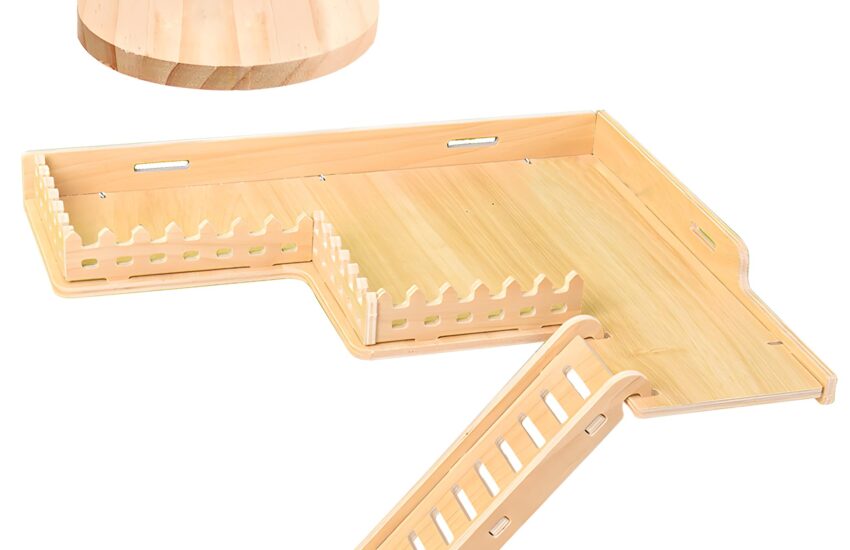Best Hamsters for Minimalist Living
For those embracing a minimalist lifestyle, bringing a hamster into your home can be a delightful and fulfilling experience. Hamsters are not only cute and playful pets but also require less space and maintenance compared to larger animals. In this article, we’ll explore the best hamster breeds suited for minimalist living, alongside tips for their care and habitat setup. Let’s dive into the world of hamsters and find your perfect furry companion.
Choosing the Right Hamster Breed
When choosing a hamster for minimalist living, it’s crucial to consider the breed and its specific needs. Some hamster species thrive in smaller spaces and have lower maintenance requirements than others. Popular choices for minimalist homes include the Syrian hamster and the Dwarf hamster. **Syrian hamsters** are larger and can be kept alone in a decent-sized cage, while **Dwarf hamsters** often require less space and can be sociable. Understanding the characteristics of each breed will help you make an informed choice.
Syrian Hamsters: The Ideal Companion
Syrian hamsters, often referred to as golden or teddy bear hamsters, are some of the most recognized pet hamsters. They are typically solitary animals, meaning they prefer living alone, which is ideal for those with limited space. Their cages should be spacious enough, at least 18×30 inches, allowing them to explore and exercise. Syrian hamsters are known for their playful and friendly demeanor, making them a great choice for families or individuals seeking a loving companion. Just remember to provide hiding spots and enrichment items to keep them mentally stimulated.

Dwarf Hamsters: Compact and Active
Dwarf hamsters, including the Roborovski and Campbell’s dwarf hamsters, are smaller in size and often have a vibrant personality. Their compact size makes them perfect for minimalist living, as they need less cage space—ideally around 24×12 inches. Dwarf hamsters can be kept in pairs or small groups, given ample room to avoid territorial disputes. These little creatures are active, curious, and generally enjoy social interaction, which adds to their charm as pets.
Habitat Setup for Minimalist Living
Creating a minimalist habitat for your hamster is essential for its well-being and happiness. A simple but functional cage setup will provide the required safety and space your pet needs to thrive. Remember, less is often more. Instead of cluttering the cage with unnecessary items, focus on the basics: a safe substrate, quality food, a water bottle, and a few toys for enrichment. Regular cleaning and maintenance will keep the environment healthy for your furry friend.
Cage Essentials
Your hamster’s cage should have a solid floor and secure bars to prevent escapes. A generous layer of bedding is crucial as it allows for burrowing and makes for a comfortable resting area. Choose bedding material that is safe and absorbent, such as aspen shavings or paper-based bedding. It’s also important to include a food dish, a water bottle, and a few interactive toys. These can be something simple like a chew toy, tunnel, or a wheel for exercise. A sparse yet creative cage setup can reduce stress for your pet while fitting seamlessly into your minimalist philosophy.
Maintaining a Healthy Habitat
Regular maintenance of your hamster’s habitat is essential for their health. Minimalist living entails streamlined cleaning methods. Aim for a partial cage clean every week—removing soiled bedding and uneaten food—and a full clean every two to three weeks. This process not only keeps the environment hygienic but helps you stay organized and reduce clutter. Establishing a routine will make maintenance easier while ensuring that your hamster always lives in a clean and safe environment.
Feeding Your Hamster: The Minimalist Approach
Proper nutrition is crucial for hamster care. A balanced diet should consist of high-quality hamster pellets, fresh vegetables, and occasional treats. The minimalist approach dictates that you focus on straightforward, nutritious foods, avoiding commercial mixes that may contain excessive additives. Incorporate a bit of variety in terms of vegetables, but ensure they’re safe for your hamster—avoid any that can be toxic, such as onions or citrus fruits.
Simple Feeding Schedule
Establishing a simple feeding schedule can streamline your hamster’s meal routine. Feed your hamster daily at the same time, offering fresh pellets, a small portion of veggies, and ensuring clean water is always available. Remove any uneaten fresh food to prevent spoilage. Using a lightweight, easy-to-clean bowl can further simplify your feeding experience. By adhering to this schedule, you’ll enhance your hamster’s health while maintaining your own organizational goals.
Monitoring Flow and Activity
Keeping an eye on your hamster’s eating habits is important. Regularly check the food supply, weekly weigh your hamster, and observe their activity levels. If your hamster is not eating or is less active, it may be time to consult a veterinarian. This simple check-in can save you time and potential hassle later on, keeping your hamster healthy and happy within a minimalist lifestyle.
Key Takeaways
- Syrian and Dwarf hamsters are ideal breeds for minimalist living.
- A simple habitat setup focused on essentials contributes to a stress-free environment.
- Regular maintenance and monitoring can streamline care for your hamster.
- Feeding a balanced, uncomplicated diet is key to your pet’s health.
- Emphasize safety and enrichment with minimalistic principles.
FAQ
1. What is the best hamster for beginners with a minimalist lifestyle?
The **Syrian hamster** is often recommended for beginners, especially those practicing minimalist living. Their solitary nature allows for easy maintenance as they don’t require company within their habitat. Their friendly demeanor means they can bond well with their owners, providing ample companionship without overwhelming demands.
2. How much space do hamsters need in their cages?
Syrian hamsters need a cage with minimum dimensions of 18×30 inches, while **Dwarf hamsters** typically require around 24×12 inches due to their smaller size. Providing the right-sized cage is crucial for ensuring your hamster has sufficient space to explore, exercise and feel comfortable, aligning with minimalist principles.
3. Can I keep multiple dwarf hamsters together in a small space?
While Dwarf hamsters can sometimes live in pairs, it’s essential to ensure they have adequate space in their cage to avoid territorial fights. A larger cage with enough hiding spots and exercise devices can promote cooperative living among Dwarf hamsters, making it feasible for those with limited space.
4. What bedding materials are best for minimalistic hamster habitats?
**Paper-based bedding** or **aspen shavings** are preferred options when building a minimalist hamster habitat. These materials are easy to clean, absorb moisture well, and provide a comfortable environment for your pet. Avoid cedar or pine bedding, as these can be harmful to your hamster’s health.
5. How often should I clean my hamster’s cage?
Aiming for a partial cage clean every week, with a full clean every two to three weeks, strikes a balanced maintenance routine. This schedule minimizes clutter and ensures a healthy living environment, which aligns with minimalist values while fostering a happy home for your hamster.
